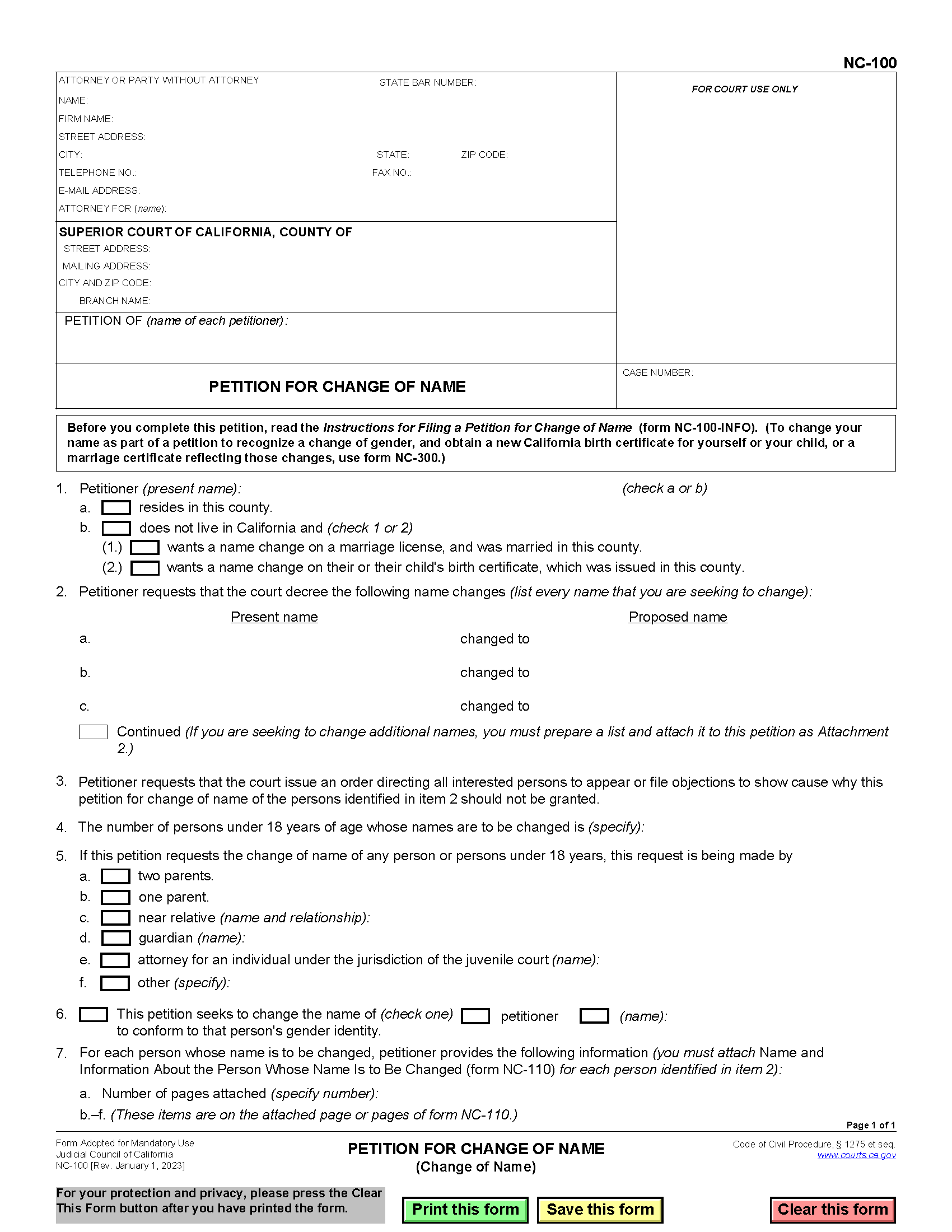Eligibility Requirements
- Must be 18 years of age
- If under 18, petition must be filed by parent or guardian
- Filed in the superior court where the petitioner resides
Non-Residents
Non-California residents can file for a name change as long as they are seeking to update their California birth certificate or marriage license that was issued in the county where they are filing the petition.[1]
How to Legally Change a Name in California
Step 1 – Required Forms
To request a legal name change, the petitioner must complete the following forms:
- Civil Case Cover Sheet (Form CM-010)
- Petition for Change of Name (Form NC-100)
- Name Change Information (Form NC-110)
- Order to Show Cause (Form NC-120) (complete only applicable fields)
- Decree Changing Name (Form NC-130) (complete only applicable fields)
Step 2 – Filing
Step 3 – Publication
Step 4 – Hearing (if applicable)
Step 5 – Decree
Marriage and Divorce
A person can change their name when getting married by adding their former name on the marriage license application. Once the license is issued, the couple has 90 days to get married and obtain a marriage certificate with the spouse’s new name.[3] The certificate can then be used to update their ID and other records.
A spouse can revert to their former legal name as part of the divorce process by completing section 12 of the Declaration for Dissolution (Form FL-170) and section 4(f) of the Judgment (Form FL-180).[4] Once the judge signs the Judgment form to finalize the divorce, the spouse can obtain a certified copy to update their ID.
Resources
Forms
- Civil Case Cover Sheet (Form CM-010)
- Petition for Change of Name (Form NC-100)
- Name Change Information (Form NC-110)
- Order to Show Cause – Change of Name (Form NC-120)
- Decree Changing Name (Form NC-130)
- Declaration for Default or Uncontested Dissolution or Legal Separation (Form FL-170)
- Judgment (Form FL-180)
Links

